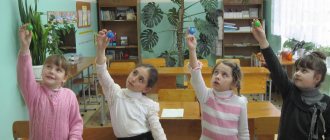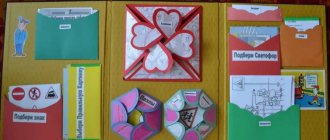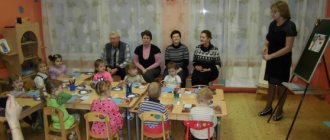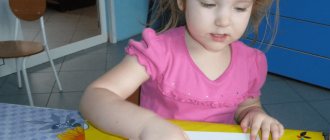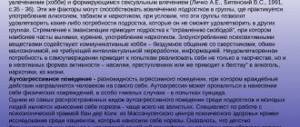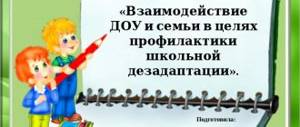Features of organizing work in a mixed-age group
The problems of organizing the educational process in groups of different ages were addressed in their works by both practicing teachers and methodologists. The organization of training and education in such groups has a certain complexity, since teachers are required to know the specifics of working with different age groups and the ability to correlate program requirements with the individual characteristics of students.
In addition to the individual psychological characteristics and level of mental development of children, it is also necessary to take into account the child’s gender. After all, even babies of different sexes have different mental processes. Boys' brains are generally more active than girls' brains. Boys are more dexterous than girls in performing mathematical operations and in visual-spatial thinking, and girls have more developed verbal abilities than boys. Hence the conclusion: the education of boys and girls must be approached differently, starting from the age of 4.
That is why the teacher, preparing for classes, must select, along with traditional, special material for children of different genders, different ages, in accordance with their intellectual and psychological characteristics.
The scientific and methodological basis of the pedagogical process in a small preschool educational institution is the correct combination of the general requirements of preschool pedagogy with the specific conditions of education in each group of children of different ages. In each specific case, the teacher must determine the composition of the group, identify 2-3 subgroups and, in accordance with them, differentiate educational work. The most appropriate is to fill groups with children of close, adjacent age.
In this case, it is better to implement the principle of maximum consideration of the age capabilities of children. A general regime is established in the group that meets the capabilities and needs of children of both groups, favorable conditions are created both for independent activity and for conducting classes.
The organization of the educational process in a group of different ages has a positive impact: although the combination of children of different ages in one group complicates the work of the teacher, at the same time it opens up wide opportunities for organizing communication between children of different ages.
As our observations indicate, younger children in a mixed-age group willingly listen to advice, comments, and assessments of older children made in a friendly manner, perceive well their fair management of joint activities, and react negatively to harsh and authoritarian attitudes. Constant communication between younger children and older children forms friendships and independence. The example of elders for younger ones is of particular importance.
The teacher needs to make sure that the kids are not passive observers, but active participants in the process.
In organizing the education of children of different age groups, there are two main forms : games and activities, the main goal of which is the comprehensive education and development of each child, the formation of educational skills.
A game
Playing in a mixed-age group allows you to achieve significant results, since it creates favorable conditions for the interaction of the teacher with children and children with each other. Didactic, intellectual games as a form of educational organization acquire special significance, since they use self-learning and mutual learning. In a didactic game, educational and gaming aspects interact. In accordance with this, the teacher simultaneously teaches children and participates in their play, and children learn while playing.
In a didactic game in a group of different ages, knowledge and skills are consolidated, and new educational material is learned.
For the successful organization of work in groups of different ages, the overall play of children is of great importance. The toys that children bring from home contribute to the unity of a group of different ages, because new facets of communication appear. Communication during joint activities provides enormous opportunities for mutual influence between children of different ages, for organizing mutual assistance, and for teaching younger ones by older ones.
However, it should be said that although the game significantly increases the effectiveness of the pedagogical process in a multi-age group, the main form of organizing education in preschool institutions remains the lesson.
Class
In groups of different ages, frontal, group and individual forms of organizing the educational process are used, which make it possible to form relationships between the teacher and children and children among themselves in different ways.
The most effective, in our opinion, is a combination of different forms of work (team work, work with a subgroup and individual lessons). More general educational tasks are best solved in frontal classes, and specific ones (communication of new material, consolidation, expansion and clarification of knowledge) - in classes with one subgroup.
Let's consider four types of organization of children's educational activities using the example of a different age group, middle and junior.
Types of organization of educational activities
Type I - stepwise start of classes
At the first stage, children of the middle group begin to work: a new topic is studied, individual tasks are completed. At the second stage, classes involve children of the younger group. A teacher works with them, older children work in pairs. At the third stage, all children work simultaneously and, for example, participate in the final conversation.
Type II – stepwise (phased) completion of the lesson
The beginning of an activity is common to all children: a play situation, a question of cognitive search orientation, an organizational moment. At the second stage, children of the younger group participate in a general lesson for 15 - 20 minutes: active participation, passive listening, subject activity, work together with older children.
After this, the younger children finish their work.
At the third stage, children of the middle group participate in various types of activities: final conversation, dialogue, while we should not forget that the total duration of the activity of children of the middle group is 20 - 25 minutes. Type III - simultaneous activities of children in different program contents.
This type of organization of educational activities provides for the simultaneous work of subgroups in one section of the program, but with different program contents. For example, at the first stage, play activities are organized for children of the junior group in a specially created environment (subordinate to the topic of the lesson) under the supervision of an assistant teacher or educator, and an organized lesson is conducted for children of the middle group.
After completing tasks, the subgroups change places.
IV type - separate activities of children
This type of organization of educational activities involves the group organization of children in different types of cognitive and developmental activities with different content. To implement this type of organization of educational activities, it is necessary to adhere to the following conditions: possible classes to be held at different times; conducting classes by subject teachers or two teachers; hiring an assistant teacher.
A teacher, organizing the educational process in a group of different ages, must involve each student in the group to actively participate in the educational process, regardless of age, gender and individual characteristics.
The organization of the pedagogical process should be focused not only on the general tasks of education (programs, guidelines), but mainly on the child, his needs, interests, and level of development.
Therefore, when organizing work in a mixed-age group, the following points must be taken into account::
1. The teacher, organizing the educational process in a mixed-age group, must clearly define the goal, objectives, content, and have a good command of the methodology for conducting classes with children in a mixed-age group.
2. Program requirements are differentiated for each age subgroup due to different ways of performing a specific task.
3. In frontal lessons, it is better to solve more general educational tasks, and more specific (different) ones - in lessons with one subgroup of children.
4. The main form of work in a mixed-age group remains classes (complex, combined, general). When conducting complex classes in a group of different ages, care must be taken to ensure that the activities of children in one subgroup do not distract children from another subgroup. It is advisable to conduct general classes provided that the topic is the same or similar for children of all age subgroups, taking into account the children’s capabilities and level of independence.
5. The material prepared for the lesson must contain common elements for children of all subgroups, which makes it possible to unite students to play games and perform certain tasks.
6. Completing tasks in a mixed-age group is carried out in two ways: under the direct supervision of a teacher; with the help of didactic games and didactic materials (children’s independent work).
7. When organizing the educational process, it is necessary to take into account the individual, age and gender characteristics of preschool children.
References:
1. Beloshistaya A.V. Formation and development of mathematical abilities of preschool children: Questions of theory and practice - M.: VLADOS, 2003. - 400 p. 2. Leushina A.M. Formation of elementary mathematical concepts in preschool children: Textbook. allowance – M.: Education, 1978. – 368 p. 3. Formation of elementary mathematical concepts in preschoolers: Textbook. allowance / Ed. A.A. Joiner. – M.: Education, 1988. – 303 p. 4. Shcherbakova K.I. Methodology for the formation of elements of mathematics in preschoolers: Textbook. allowance – K.: Publishing house of Europe. University, 2005. – 392 p. 5. Mikhailova A.I. Organization of work with children of advanced age groups: Method. pos_b. – Kh.: Vesta: Vidavnitstvo “Ranok”, 2008. − 64 p. 6. Educational groups: work planning, occupational tasks, didactic material/Order. T.Yu. Demchenko, O.V. Timofieva – Kh.: View. group “Osnova”, 2008. – 159 p. 7. Shirokova G.A. Handbook of a preschool psychologist (3rd ed.) / “Reference books” series. – Rostov-on-Don: Phoenix, 2005. – 384 p. 8. Ponimanska T.I. Preschool pedagogy: Head. A handbook for students of higher initial knowledge. – K.: Academvidav, 2006. – 456 p.
Metelitsa Irina Aleksandrovna, Donetsk region, Shakhtersk, Ukraine.
